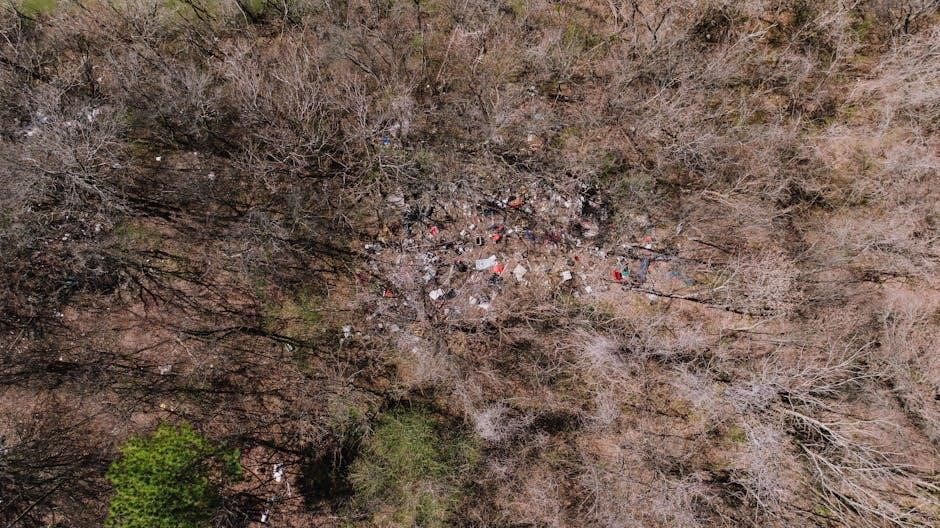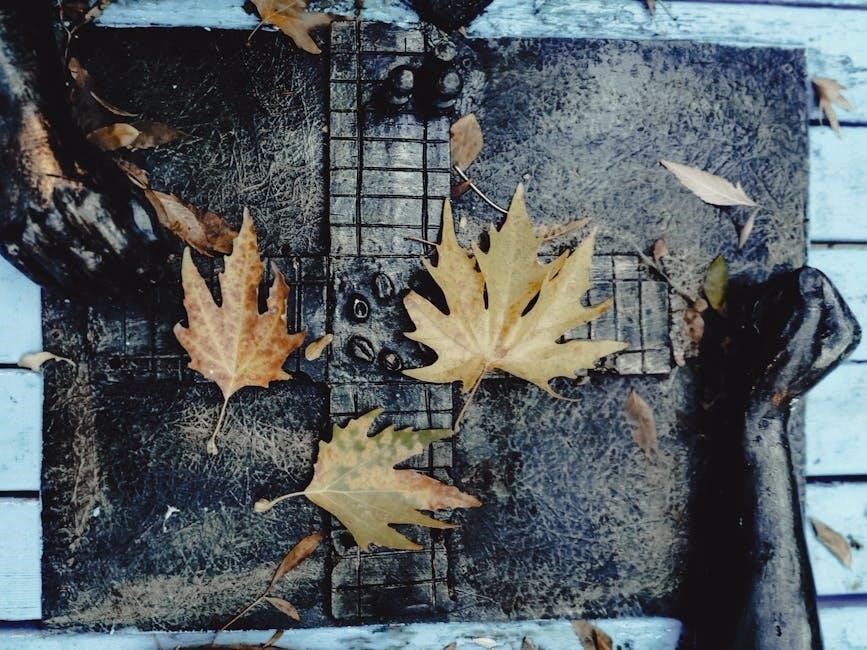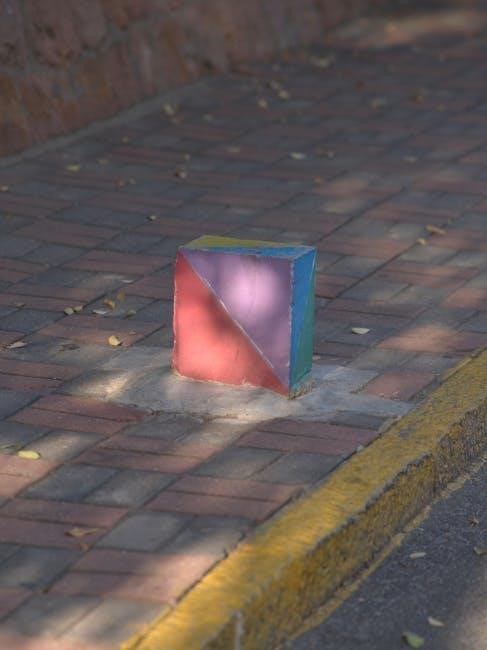Above ground pool installation offers a convenient and cost-effective way to enjoy swimming. Proper setup ensures stability, safety, and longevity.
1.1 Definition and Benefits of Above Ground Pools
Above ground pools are self-contained swimming systems installed on the ground surface, typically featuring metal or plastic frames. They offer cost-effectiveness, easy installation, and durability. These pools are portable, allowing relocation, and provide safety benefits like tall walls and secure ladders. They are ideal for smaller spaces and varying budgets, making them a popular choice for homeowners seeking affordable, low-maintenance swimming solutions.
1.2 Importance of Proper Installation
Proper installation ensures the pool’s stability, safety, and longevity. It prevents issues like leaks, uneven bases, or structural damage. A well-installed pool provides a secure environment for swimming, reducing risks of accidents. Following manufacturer guidelines and safety standards is crucial. Improper installation can lead to costly repairs or even render the pool unusable. Attention to detail ensures a reliable and enjoyable swimming experience for years to come.
Planning and Preparation
Planning and preparation are crucial for a smooth installation process. Assess your yard, ensure compliance with local regulations, and plan the layout to avoid future issues.
2.1 Choosing the Right Pool Size and Location
Assess your yard space to determine the optimal pool size and placement. Ensure the area is clear of obstacles and utilities. Consider sunlight exposure and drainage. Choose a location that allows easy access and visibility for safety; Measure carefully to avoid oversizing or undersizing the pool for your space. Proper placement ensures both functionality and aesthetic appeal while adhering to local regulations.
2.2 Budgeting and Selecting the Pool Kit
Determine your budget to select a pool kit that fits your needs. Kits vary in size, material, and features. Compare options to ensure you get essential components like the pool wall, frame, liner, and hardware. Read reviews and product descriptions to make an informed decision. Allocate funds for additional accessories like pumps, filters, and safety equipment. Proper planning ensures a stress-free and successful installation process.

Tools and Materials Needed
Essential tools include shovels, leveling tools, and a pump. Materials like sand, ground cloth, and hardware kits are crucial for a stable and proper installation.
3.1 Essential Tools for Installation
Key tools needed for above ground pool installation include a shovel for digging, a level to ensure even ground, and a tamper for compacting soil. A measuring tape, wrench, and screwdrivers are essential for assembling the frame. Additionally, a garden hose and pump are necessary for preparing the base and inflating the liner. Proper tools ensure a smooth and successful setup process.
3.2 Required Materials for a Successful Setup
To ensure a successful above ground pool installation, essential materials include a pool kit, sand for the base, steel wall panels, and a vinyl liner. Additional components like wall foam, cove foam, and floor supports are crucial for stability. Safety items such as fencing and signs are also necessary. Having all required materials on hand ensures a smooth and secure installation process, avoiding delays and potential issues.
Site Preparation
Site preparation involves clearing the area, removing sod, and leveling the ground to ensure a flat, stable surface for the pool. Proper preparation is essential for a secure installation and prevents future issues.
4.1 Clearing the Installation Area
Clearing the installation area is the first step in preparing your site. Remove any debris, vegetation, and obstructions to ensure a smooth setup. This step is crucial for a stable base and proper leveling. Properly clearing the area prevents future issues with the pool’s structure and ensures the liner fits correctly, enhancing safety and longevity.
4.2 Leveling the Ground for a Stable Base
Leveling the ground ensures a stable foundation for your above ground pool. Use a shovel and spirit level to achieve even terrain. Remove sod and dirt as needed, and fill in low spots with sand for a smooth surface. Proper leveling prevents structural issues and ensures the pool sits securely, enhancing safety and longevity. This step is critical before assembling the pool frame or laying the liner.
Assembling the Pool Frame
Assembling the pool frame involves unpacking and organizing components, then following step-by-step instructions to build a sturdy structure that supports the pool’s walls and liner.
5.1 Unpacking and Organizing Components
Unpacking involves carefully removing all pool parts from their boxes and verifying completeness. Organize components by category, such as frame pieces, wall panels, and hardware. Label each part for easy identification during assembly. Ensure the steel wall is placed on a 3×3 board for stability. Handle the liner with care to avoid stretching or creasing. Use a soft brush to smooth out wrinkles. Having everything ready ensures a smooth installation process.
5.2 Step-by-Step Frame Assembly Process
Begin by connecting the wall sections to the bottom ring, ensuring they are securely locked. Attach the top frame pieces to the wall panels using bolts and nuts. Tighten all connections firmly with a wrench or screwdriver. Use a level to ensure the frame is even and stable. Double-check all joints for proper alignment. Once the frame is fully assembled, proceed to attach the pool wall panels and ensure structural integrity before moving forward.
Installing the Pool Liner
Properly install the pool liner by aligning it with the wall and securing it tightly. Ensure a snug fit to prevent wrinkles and leaks for a durable finish.
6.1 Measuring and Positioning the Liner
Accurately measure and position the liner to ensure it fits perfectly within the pool frame. Remove the liner from its packaging and carefully align it with the pool wall. Smooth out any wrinkles and ensure the liner is centered. Use the adhesive backing to secure it to the pool wall, starting from the bottom and working your way up. Proper alignment prevents leaks and ensures a snug fit.
6.2 Securing the Liner to the Pool Wall
After positioning the liner, remove the protective covering from the adhesive backing and press it firmly onto the pool wall. Ensure there are no air pockets by smoothing the liner from the center outward. Use a shop vac or tamping tool to remove excess air and ensure a tight seal. Double-check all edges to confirm they are securely attached, ensuring a leak-proof installation.

Connecting the Pool Wall and Frame
Align the wall panels with the frame, ensuring proper fitment. Use the provided hardware to secure the panels tightly. Tighten all bolts and screws gradually for stability.
7.1 Attaching the Wall Panels to the Frame
Begin by aligning each wall panel with the corresponding frame section. Ensure the panels are properly seated and aligned. Use the provided bolts and screws to secure the panels tightly to the frame. Tighten all connections gradually to maintain even pressure and prevent warping. Double-check each panel for stability and alignment before moving to the next one.
7.2 Ensuring Structural Stability
After attaching the wall panels, inspect all connections for tightness. Ensure the pool frame and walls are perfectly level and evenly supported. Use additional braces or supports if necessary to distribute weight evenly. Check for any gaps or misalignments that could compromise stability.
Regularly inspect the structure during and after installation. Tighten any loose bolts or screws promptly. A stable foundation ensures the pool remains safe and durable for years of enjoyment.

Preparing the Pool Base
A smooth, level surface is essential for the pool base. Lay a sand layer to provide even support and drainage, ensuring a stable foundation for the pool.
8.1 Laying the Sand Base
Laying the sand base is crucial for a stable pool installation. Spread 2–3 inches of sand evenly across the leveled ground. Use a rake and hand tamper to compact it, ensuring a smooth surface. Proper compaction prevents shifting and ensures the pool sits evenly. This step is essential for the structural integrity of the pool and its longevity.
8.2 Installing Pool Floor Supports
After laying the sand base, install floor supports to add stability. Place the supports evenly around the pool area, ensuring they align with the pool’s frame. Secure them firmly into the ground to prevent shifting. These supports protect the pool liner from sharp objects and enhance the overall structural integrity, ensuring a safe and durable swimming environment for years to come.
Finalizing the Installation
Finalizing involves testing the pool for leaks, ensuring all equipment works, and completing the setup to ensure safety, functionality, and a durable swimming environment.
9.1 Installing Pool Equipment and Accessories
Install the pump, filter, and heater according to the manufacturer’s instructions. Attach the pool ladder or steps securely. Ensure all equipment is properly connected and tested for functionality. Safety accessories like pool fencing and signs should be added to meet local regulations and ensure a safe swimming environment for everyone.
9.2 Testing the Pool for Leaks and Stability
After installation, inspect the pool liner and walls for any visible leaks. Fill the pool partially and monitor for 24 hours to ensure no water loss. Check all connections and equipment for proper function. Test the pool’s stability by applying weight evenly around the edges. Ensure the structure can withstand intended use and weather conditions. Follow manufacturer guidelines for final inspections and adjustments.

Safety Considerations
Ensure the pool area is secure with fencing and gates. Install safety signs and equipment for visibility and emergency preparedness. Regular inspections help prevent accidents and ensure compliance with local regulations.
10.1 Installing Fencing and Gates
Installing fencing and gates around your above ground pool enhances safety by preventing unauthorized access. Choose durable materials like metal or wood, ensuring the fence is at least 4 feet tall. Gates should be self-closing and self-latching, with a secure lock. Position fencing to maintain clear visibility and avoid tripping hazards. Regular inspections of the fence and gate ensure long-term safety.
10.2 Adding Safety Signs and Equipment
Install clear safety signs around the pool area to alert users of potential hazards. Use signs with bold text and universal symbols for visibility. Equip the pool with essential safety items like a first aid kit, flotation devices, and rescue hooks. Ensure all equipment is easily accessible and in good condition. Regular inspections of safety gear are crucial to maintain a secure environment for swimmers of all ages.

Maintenance and Upkeep
Regular cleaning, chemical balance checks, and equipment inspections ensure optimal pool functionality. Winterizing protects the pool during off-seasons, maintaining its longevity and safety.
11.1 Regular Maintenance Tasks
Regular maintenance involves skimming debris, vacuuming the pool floor, and monitoring chemical levels. Checking equipment functionality and washing cartridge filters ensure efficient operation. Inspecting the pool liner for damage and maintaining the surrounding area prevent structural issues. Consistent upkeep ensures a clean, safe, and enjoyable swimming environment throughout the season.
11.2 Winterizing the Pool
Winterizing involves cleaning the pool, draining equipment, and securing it for cold weather. Remove debris, lower water levels, and disconnect pumps. Use a winter cover to protect from contamination and damage. Drain and store pipes, and apply winterizing chemicals to prevent algae growth. Regularly inspect the pool during winter to ensure stability and prepare for reopening in spring.
